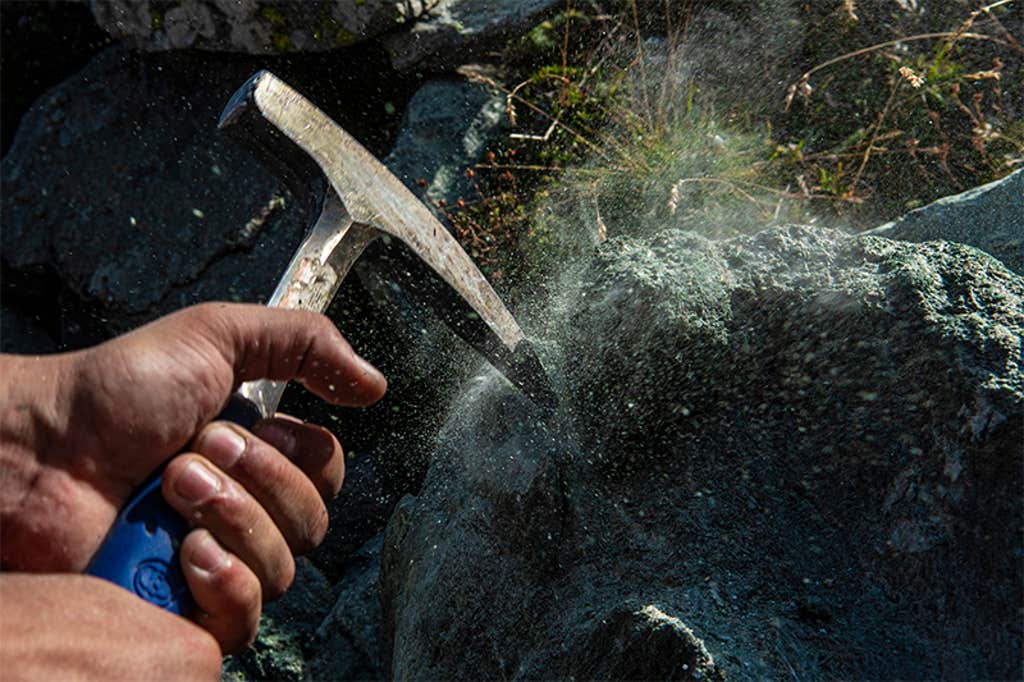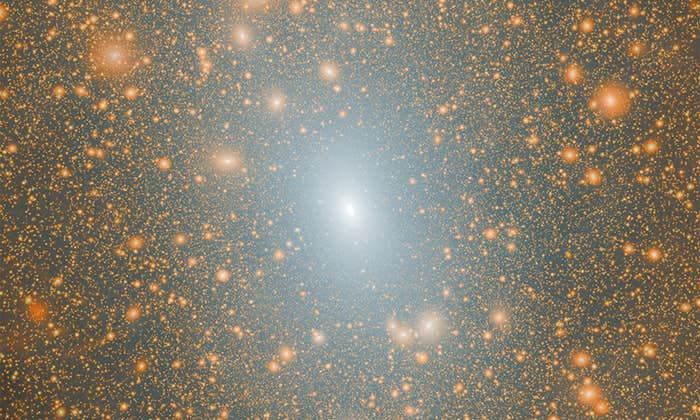Could understanding the forces that drove former ice ages on Earth help us figure out how to slow or even reverse global warming? It’s a question scientists have spent considerable time contemplating.
The geologic record shows that many dramatic historic fluctuations in Earth’s climate—including ice ages and periods of accelerated warming—were driven by imbalances in the carbon cycle. Humans are clearly responsible for the current imbalance—we emit 50 times more carbon dioxide annually than all the world’s active volcanoes combined, far outstripping the capacity of natural “sinks” (like the oceans and forests) to drain and sequester that excess CO2 from the atmosphere.
But when we look at the distant past, explaining carbon cycle imbalances becomes more complex, since Earth’s carbon system is composed of many components—plants, animals, soils, oceans, rocks—interacting over timescales ranging from months to millions of years.
It’s tempting to think these carbon-gobbling minerals could help us avert climate disaster.
Now a new paper proposes a bold idea about what has turned Earth icy more than once in its long history. The authors, MIT’s Joshua Murray and Oliver Jagoutz, suggest that our planet’s ice ages may have been brought on by a previously unrecognized link between plate tectonics—the drifts and collisions of pieces of Earth’s crust—and Earth’s capacity to remove carbon from the atmosphere over long timescales. The study builds on earlier observations that unusual rocks called ophiolites formed during several periods of pronounced cooling in the Paleozoic Era, 541 to 252 million years ago.
Ophiolites—derived from a Greek root meaning “serpent”—are anomalies. Seen from above, they resemble writhing piles of snakes. These exposed slabs of ancient oceanic crust and underlying upper mantle were formed at oceanic ridges but are found high in mountains like the Alps and Himalayas, having been thrust onto continents during tectonic plate collisions.
Ophiolites are composed of volcanic basalts and other igneous rocks called gabbro and peridotite. When exposed to the atmosphere, basalt and peridotite interact with carbon dioxide to form carbonate minerals like calcite that store carbon dioxide in solid form. In fact, some contemporary proposed carbon dioxide removal strategies are based on this process, with modest success to date.
Geoscientists have previously speculated that ice ages in the Paleozoic—including two linked to mass extinction events—could have been driven by ophiolites that were exposed when the supercontinent Pangea took shape between about 350 and 200 million years ago. Those ophiolites captured so much carbon, goes the thinking, that the planet was plunged into a freezing spell.

But the authors of earlier studies were not able to explain one important aspect of the rock record during these periods of cooling: namely, big changes in the ratio of two carbon isotopes. Over time, sedimentary rocks from marine environments record changes in the relative abundance of carbon isotopes in the ocean and atmosphere.
The two varieties of carbon in question, 13C and 12C, are stable and similar in every way—except that the lighter 12C is easier for photosynthesizing organisms, such as trees and phytoplankton to process. “Organic” carbon like that found in peat, coal, or petroleum thus has relatively more 12C and less 13C than the “raw” carbon dioxide spewed by volcanoes. During each of the half dozen Paleozoic ice ages, the ratio of 13C to 12C rose significantly, indicating that large volumes of photosynthetically fixed, light 12C disappeared from the ocean and atmosphere.
This is where ophiolites come in. When rainwater weathers them, they produce certain minerals known as smectites, often called “expansive” or “fat” clays. Their crystal structure has exceptionally high surface area, enabling them to soak up water—and ensnare large amounts of organic matter containing 12C-heavy carbon. (Clays produced by weathering of more ordinary igneous rock types, such as granite, have much lower net surface area.)
Using a computer model of the geochemistry of ophiolite weathering, together with global carbon cycle simulations, the authors show that smectite clays derived from ophiolites and buried within marine sediments could plausibly capture enough carbon to match the Paleozoic variations in 13C/12C—and tip the world into an ice age.
Today, the Earth is closer to tipping in the opposite direction, and it’s tempting to think that perhaps carbon-gobbling smectites could help us avert climate disaster. Of course, the study’s simulations run on timescales of millions of years. Unlike humans, ophiolites and other rocks have all the time in the world. ![]()
Lead image: Ilija Erceg / Shutterstock

























